Businesses of all shapes and sizes make data-driven decisions every day. When that foundational information is faulty, it has clear costs. In fact, those costs are around $12.9 million a year for organizations with poor data quality.
Marketing teams especially rely on accurate, clean data to launch personalized campaigns with high returns on investment (ROI). Inaccurate customer data can lead to wasted resources, dissatisfied customers, and financial losses from missed revenue opportunities.
That’s where data hygiene comes in. In this guide, we’ll cover everything you need to know about cleansing your database, including:
- What Is Data Hygiene?
- What Are the Benefits of Data Hygiene?
- What Does a Data Hygiene Plan Look Like?
- Data Hygiene Best Practices

What Is Data Hygiene?
Data hygiene is the process of keeping databases clean and error-free. Data that is outdated, incomplete, duplicated, or simply incorrect is known as “dirty data,” which hygiene practices seek to address.
How Does Dirty Data Occur?
Data can become “dirty” at any point in its collection, storage, and analysis, but these errors aren’t always someone’s fault.
While it’s incredibly easy to introduce errors into your system as you enter and use information, data can also become outdated when customers move or change their contact information. In fact, industry experts agree that the average consumer file decays at a rate of 25% to 30% a year, and the decay rates of business lists can be even higher. These small changes can prevent you from reaching your customers, making ongoing data hygiene practices crucial.
What Are the Benefits of Proper Data Hygiene?
Undergoing a robust data hygiene process brings several benefits to teams across your organization, such as:
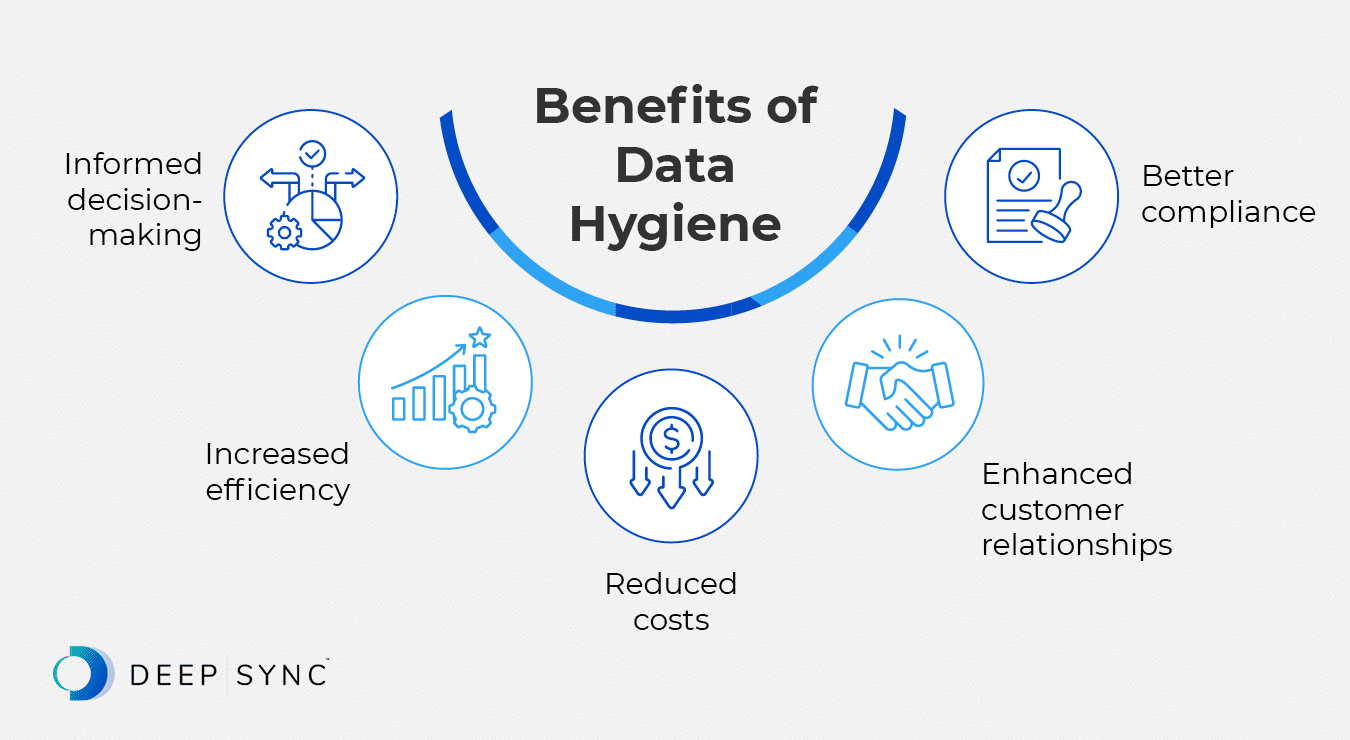
- Informed decision-making. Clean, reliable data enables stakeholders and business leaders to make well-informed, strategic decisions about their marketing outreach, product development, and customer engagement efforts.
- Increased efficiency. With a streamlined data management process, you can be confident that the data you’re using is accurate and up-to-date. As a result, you’ll make many internal processes more efficient, including lead generation, lead tracking, segmentation, and customer support.
- Reduced costs. Proper data hygiene prevents your organization from wasting resources by ensuring you send marketing communications to the right audience using updated contact information.
- Enhanced customer relationships. When you use updated customer data to personalize your marketing efforts, customers will have a more positive experience with your communications, leading to increased brand loyalty.
- Better compliance. Data hygiene processes can also help your organization better comply with privacy regulations, such as the General Data Protection Regulation (GDPR) and the California Consumer Privacy Act (CCPA). For example, Do Not Mail and Do Not Call suppression help companies respect customers who’ve opted out of direct solicitations.
Clean customer data provides a solid foundation for both offline and online marketing, enabling you to connect with customers more effectively while simultaneously streamlining internal operations.
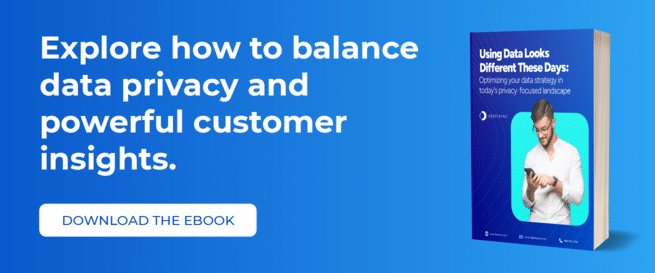
What Does a Data Hygiene Plan Look Like?
A strong data hygiene plan enhances data quality by cleansing errors and irregularities, standardizing addresses, flagging undesirable profiles, and improving overall usability. For the best results, we recommend that every data hygiene plan include:
- Conducting an audit to assess your current data
- Establishing data governance
- Creating uniform entry standards (like whether to abbreviate “Street” to “St.”)
- Validating customer records and addresses against an external data source
- Suppressing unhelpful data (like deceased customers) and removing duplicate records
- Appending or enriching data to fill in the gaps in your database
For optimal results, data hygiene should not be a one-time process. Instead, establish a regular data hygiene routine to keep your data accurate and actionable.
Data Hygiene Best Practices
High-quality data is essential for operating a successful business. Let’s review some data hygiene best practices to ensure your data remains clean and actionable.
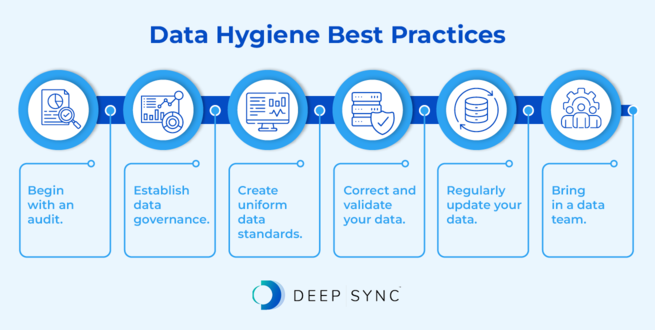
1. Begin with an audit.
The first step in establishing ongoing data hygiene procedures is to complete a data audit. A realistic view of your data’s current state can help you determine your next steps.
An audit involves looking through your customer relationship management (CRM) platform to identify any issues. That way, you can begin forming a plan to resolve these issues and estimate the time required to fix them. For example, you may notice that you have a lot of duplicate customer entries, prompting you to invest in deduplication services.
Alternatively, you can turn to a data provider like Deep Sync to systematically check your customer data’s health. Our Data Quality Report helps you pinpoint areas for improvement by identifying:
- Counts of unique individuals and households, as well as match rates to Deep Sync’s robust identity graph
- The quantity of personal information attributes that can be appended to your customer data, including names, postal addresses, phone numbers, and email addresses
- The fill rate of additional data attributes that can be appended to your customer data, including demographics, financial data, interests, household composition, purchase behaviors, and more
Once you’ve identified where problems exist, continue with the next steps to parse out that information bit by bit.
2. Establish data governance.
Data quality is everyone’s responsibility. From frontline employees to C-suite leadership, following best practices for handling customer contact information, mission-critical data, and proprietary materials across your entire organization is vital to its success.
A proper data governance framework can help keep your database organized and ensure your data remains high-quality. Start by designating a data steward who is responsible for master data files and special data hygiene projects.
Then, create data hygiene standard operating procedures (SOPs) to better train new hires and remind current employees of your data hygiene practices. These SOPs should clearly designate data ownership, outline management processes, and specify the consequences of non-compliance.
With senior leadership buy-in and a focus on data management, you can improve your data’s quality throughout collection, storage, and manipulation—ensuring that information is as accurate as possible.
3. Create uniform data standards.
Dirty data isn’t the only problem that data hygiene solves. A data hygiene process can correct smaller inconsistencies that occur throughout data collection and manual data entry.
When it comes to cleansing your database, do sweat the small things. Minor inconsistencies in your data can make it difficult to use, confuse team members, or result in duplicate records.
To prevent these inconsistencies, set uniform standards across your organization. Include these standards in every team member’s training. Ensure that you cover how to standardize:
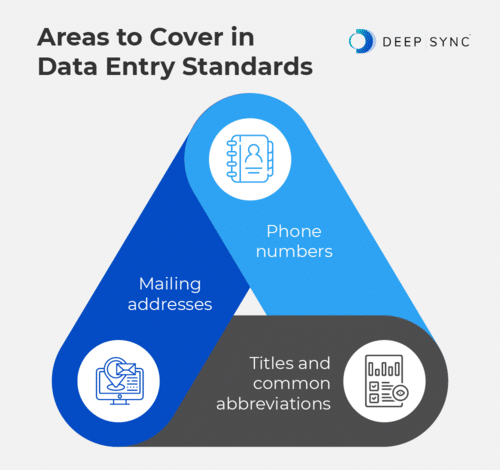
- Mailing addresses. From non-standard formatting to consumer moves, addresses are a common point where small details can quickly get derailed. Standardization in this area is especially essential for direct mailings or location-based marketing. For example, decide if you want to use address abbreviations like “St.” or the non-abbreviated “Street.”
- Phone numbers. There are many ways to enter a phone number. Do you need the country code, or are all of your contacts in your country? Will you put parentheses around the area code or just use hyphens between each section? Standardizing how you enter phone numbers can ensure you effectively reach your contacts.
- Titles and common abbreviations. Many elements of contacts’ names and titles can be abbreviated, shortened, or entered in multiple ways. Do you want “CEO” spelled out, or does the acronym suffice? Will you list contacts as “Junior” or “Jr.”? Consider fields that may lead to inconsistencies and address them accordingly.
Implementing consistent formatting for data entry across all departments can keep your data clean between data hygiene processes. Inform your team of any updates to these standards so they can adjust quickly.
4. Correct and validate your data.
Even with the best SOPs and data hygiene processes, how can you be sure your data is correct?
A reputable data partner can cleanse postal addresses and provide updated addresses where applicable. Data providers commonly use services such as CASS™ System, DSF2®, LACSLINK®, and NCOALINK® for address hygiene and verification.
Providers can also transform messy, fragmented data into accurate and unified customer records through identity resolution. By organizing customer data, you can more effectively identify specific audiences for targeted marketing campaigns, tailor messaging, and maintain consistency across all touchpoints.
While cleansing and correcting your current data is crucial to a company’s success, it’s also helpful to enlist a data partner to suppress unhelpful data. Suppression services can rid your database of useless information, including:
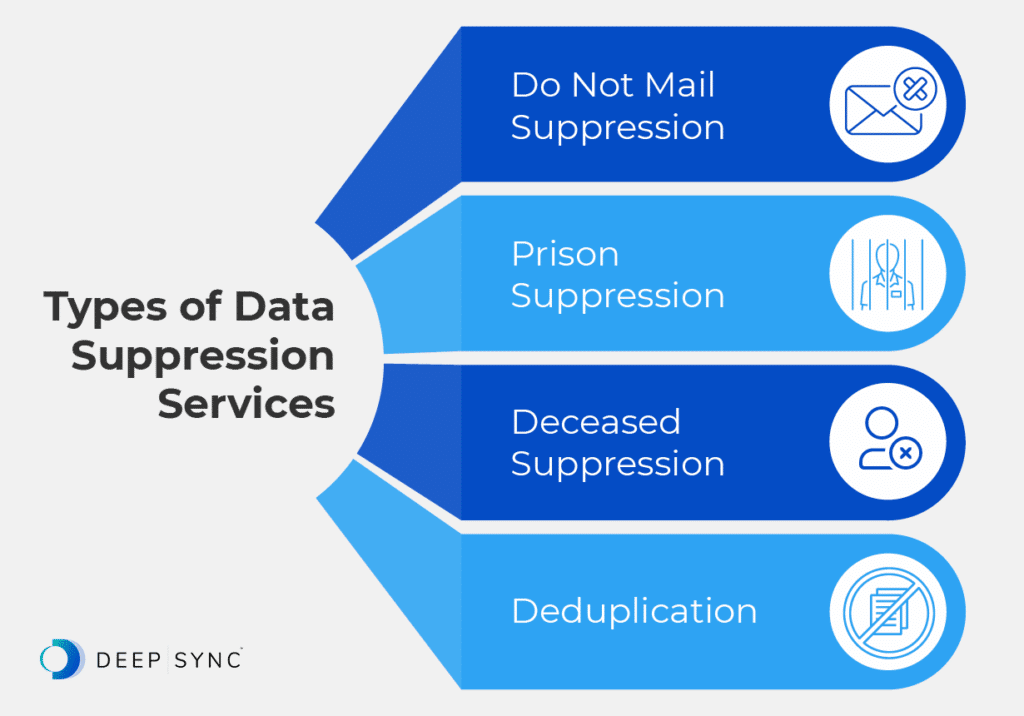
- Do Not Mail Suppression. Identify the names and addresses and/or email addresses of consumers who have registered with the ANA’s DMAChoice™ Program to eliminate direct marketing solicitations.
- Prison Suppression. Remove addresses that are associated with federal and state prisons, county correctional facilities, and city jails throughout the United States.
- Deceased Suppression. Remove deceased individuals from your marketing efforts before a promotion to prevent unwanted mail from being delivered to the decedent’s family.
- Deduplication. Remove name, address, email, and telephone records that appear multiple times in your system.
When it comes to data, more is not necessarily better. The data types discussed above are functionally useless when it comes to marketing initiatives and will clog up your business’s (or your clients’) databases. Removing them from consideration during marketing initiatives will prevent excessive postage, unwanted fines, damage to your brand image, and wasted time following unproductive leads.
5. Regularly update your data.
In 2024, the United States Postal Service® processed an average of 27,201 address changes per day. As customers move, get married, change their email addresses and phone numbers, or change their names, companies must update their databases accordingly. Additionally, consumer data decays at an average rate of 25-30% per year, making routine data hygiene critical.
Deep Sync offers comprehensive data hygiene solutions, including address verification and correction. We leverage a full suite of United States Postal Service® hygiene processes to validate postal addresses and provide updated addresses where applicable.
Creating processes for ongoing maintenance and uniformity is key to ensuring proper data hygiene. This includes:
- Standardization in data entry. Across the board, your team should enter each data point into your system in a standard manner, with clearly outlined rules dictating this process.
- Handling of errors. How will your staffers handle duplicate entries? Incorrect or incomplete entries? Outline rules as such.
- Dirty data prevention. How will you prevent a build-up of unnecessary (or a lack of necessary) information in the future? Adding essential fields to your data collection forms and removing nonessential fields helps in this effort.
Simply developing these procedures isn’t enough to ensure an optimized, useful database. Communicating these points across your business and guaranteeing everyone follows your new protocols can help minimize the amount of dirty data in the future. Revisit these standards and check in on your database regularly to sustain the efforts you’ve invested in.
6. Bring in a data team.
Whether you’re a business examining your own database or are a reseller assisting your clients, the process can be complicated. Most people don’t have the time, resources, or data expertise to execute a large-scale data hygiene project in-house.
While it’s technically possible to manually complete some of these efforts on your own, bringing in a team that specializes in data hygiene drastically eases the process.
Deep Sync handles various essential data hygiene processes, including postal address hygiene, email address validation, suppression services, data quality reports, integrated identity resolution, and more.
Keep Your Data Clean With Deep Sync’s Data Hygiene Solutions
Marketing agencies, businesses, direct mailers—everyone is talking about the importance of data for building, maintaining, and growing your customer base. Simply having the data, however, isn’t enough to harness its power!
Maintaining your records with strong data hygiene practices will ensure they provide useful, actionable insights for years to come. With this guide, you’ll be off to a great start.
Don’t trust just anyone with your data hygiene needs, though. Instead, partner with Deep Sync. Our industry knowledge, expertise, exclusive partnerships, and robust data can help you ensure your database is as clean and actionable as possible. Contact us today to schedule your strategy session and start cleaning up your first-party data!
For more information about maintaining your database, explore these additional resources:
- What Is First-Party Data and Third-Party Data? Expert Guide. Proper data hygiene ensures your first-party data is accurate and actionable, which includes supplementing it with third-party data. Learn more about how you can collect, organize, and leverage this information.
- What Is Identity Resolution? The Ultimate Marketer’s Guide. Identity resolution helps you organize customer data to obtain stronger insights. Discover how identity resolution can improve marketing decisions and the customer experience.
- What Is Data Enrichment? How To Unlock Marketing Insights. Once you’ve applied data hygiene services to your database, you may notice you’re missing valuable information. Explore how you can flesh out your customer data with data enrichment.
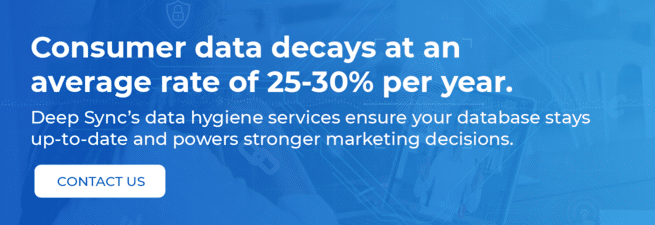

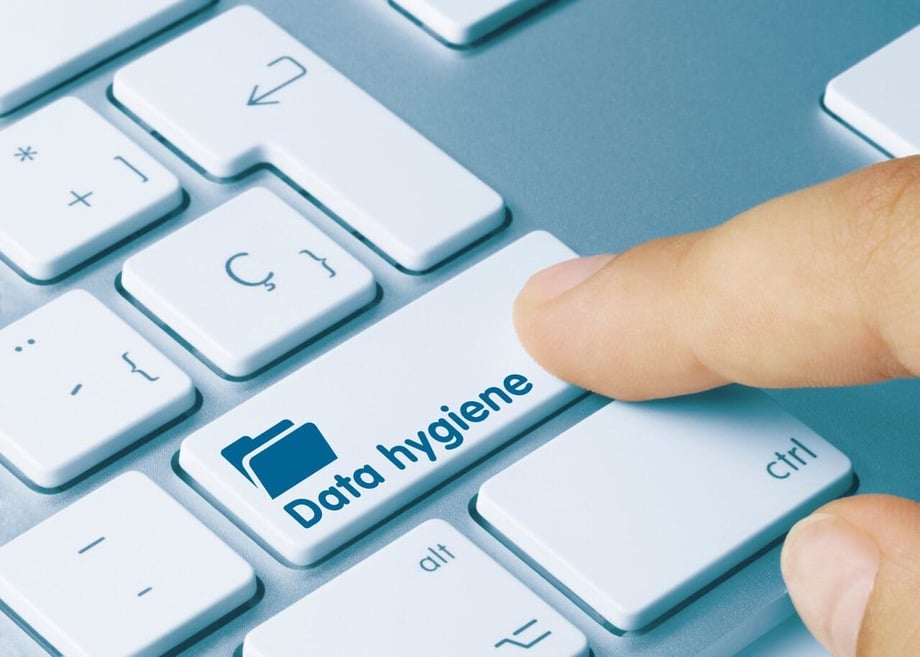









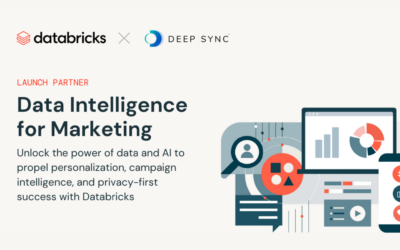
0 Comments